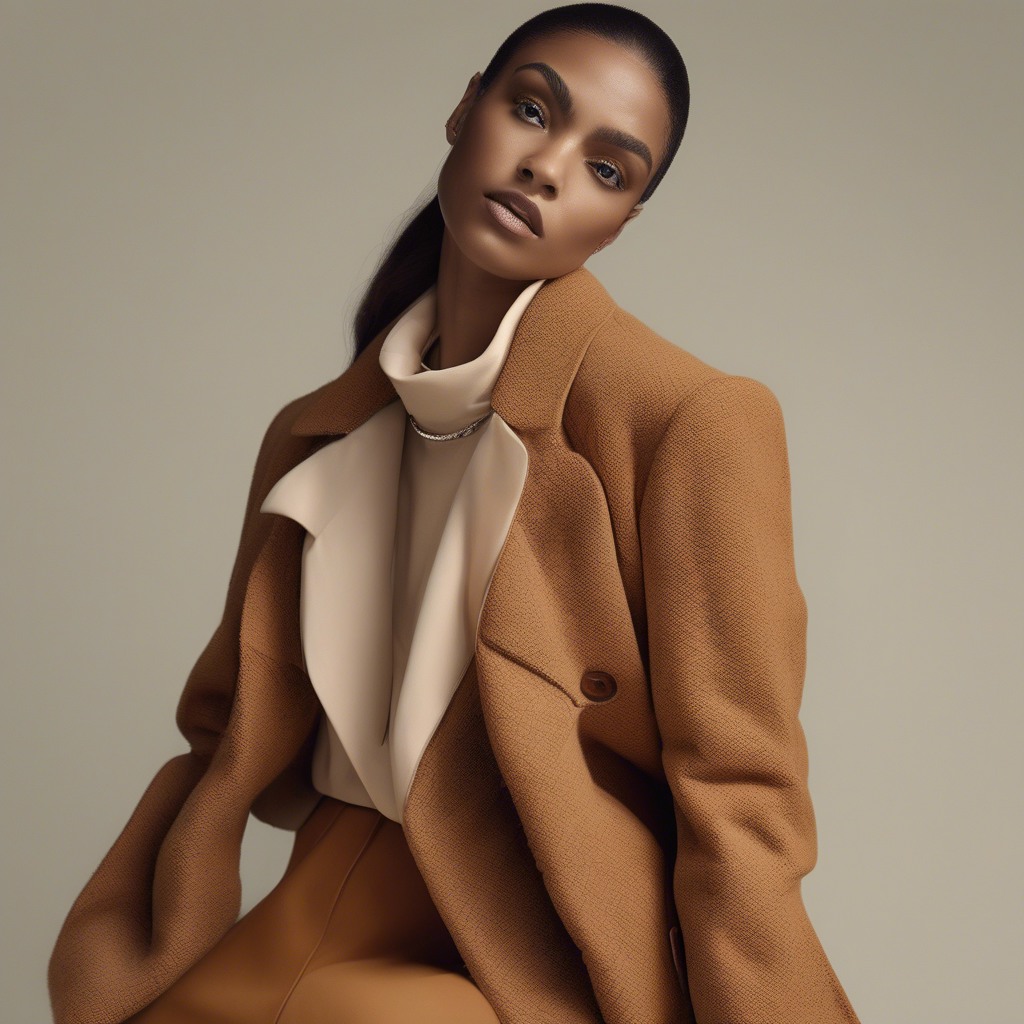The Evolution of Size Inclusivity in Fashion: Autumn/Winter 2025 Report

In the dynamic landscape of the fashion industry, size inclusivity has emerged as a pivotal trend, reshaping the way designers and brands approach their collections. As we transition into the autumn/winter 2025 season, this evolution is more pronounced than ever, with a significant shift towards embracing diversity in all its forms. The importance of size inclusivity cannot be overstated, as it not only reflects societal changes but also aligns with consumer demands for representation and authenticity.
Today’s fashion consumers are increasingly vocal about the need for body-positive fashion that celebrates all sizes. This evolution is propelled by a growing awareness of the mental and emotional impact of fashion on individuals, sparking a movement towards size diversity in fashion. In this report, we will explore the current state of size inclusivity, the trends shaping autumn/winter 2025, and what the future holds for plus size fashion. Prepare to dive into a comprehensive analysis that offers insights from business school professors, industry experts, and real-world examples.
Veja também: Melhores Seguros Residenciais no Brasil em 2025
The Current State of Size Inclusivity
The journey towards size inclusivity in fashion has been long and arduous, with major milestones marking significant progress. In recent years, we’ve witnessed a paradigm shift, with brands expanding their size ranges beyond the traditional norms. According to a report by the Fashion Institute of Technology, nearly 60% of brands now offer clothing in sizes beyond the standard range. This change is not only a reflection of consumer demand but also a strategic business decision to tap into a broader market.
Real-world examples abound, with retailers like ASOS and Nordstrom leading the charge by offering extensive size-inclusive lines. These brands understand that embracing size diversity is not just about inclusivity; it’s also a lucrative opportunity. Data from market research firm NPD Group indicates that the plus-size market is growing at twice the rate of the overall apparel market, underscoring the economic potential of embracing size inclusivity.
Despite these advancements, challenges remain. Many brands still struggle with the logistics of producing plus-size clothing, from technical design issues to managing inventory. However, the fashion industry’s commitment to overcoming these hurdles is evident, as seen in the increasing number of collaborations with plus-size influencers and designers who bring authenticity and expertise to the process.
Trends Shaping Autumn/Winter 2025
The autumn/winter 2025 season is poised to be a transformative period for size inclusivity in fashion. One of the most notable trends is the rise of adaptive fashion, which caters to individuals with varying body shapes and sizes by offering customizable options. Brands like Universal Standard are at the forefront of this movement, providing garments that adjust to the wearer’s unique dimensions.
Another significant trend is the integration of technology to create better-fitting clothing. 3D body scanning and AI-driven design software are revolutionizing how garments are crafted, ensuring a more precise fit for all sizes. This technological advancement not only enhances the consumer experience but also reduces returns and waste, making it a sustainable choice for brands.
The color palette for autumn/winter 2025 also reflects the theme of inclusivity, with earthy tones and deep hues dominating the runway. These colors transcend traditional seasonal boundaries, offering a versatile and inclusive aesthetic that appeals to a diverse audience.
The Role of Business School Professors and Industry Experts
Business school professors and industry experts play a crucial role in guiding the evolution of size inclusivity in fashion. Their research and insights provide a strategic framework for brands looking to implement inclusive practices. Professor James Wilson from the London Business School emphasizes the importance of data-driven decision-making, advising brands to leverage consumer analytics to understand the demands of the plus-size market.
Additionally, industry experts like fashion consultant Sarah Ahmed advocate for collaboration between brands and influencers. By engaging with voices that represent diverse body types, brands can ensure their offerings resonate genuinely with consumers. Ahmed notes that partnerships with plus-size influencers have proven to boost brand loyalty and drive sales.
Moreover, educational institutions are increasingly incorporating size diversity into their curricula, equipping future designers with the skills and knowledge needed to create inclusive collections. This educational shift is crucial in fostering a new generation of designers who prioritize inclusivity from the outset.
To complement this article, we’ve curated a video that delves deeper into the stories of brands leading the charge in size inclusivity. This visual content provides an engaging overview of the innovative approaches being adopted this season.

Frequently Asked Questions
What is size inclusivity in fashion?
Size inclusivity in fashion refers to the practice of offering clothing lines that cater to a wide range of body sizes and shapes. This approach aims to represent diverse body types and ensure that fashion is accessible to everyone, regardless of their size.
How has the fashion industry embraced size inclusivity?
The fashion industry has embraced size inclusivity by expanding size ranges, collaborating with plus-size influencers, and integrating technology for better-fitting garments. Brands like ASOS and Nordstrom have launched size-inclusive collections, showcasing their commitment to diversity.
What are the challenges in producing plus-size fashion?
Producing plus-size fashion presents challenges such as technical design complexities, the need for additional fabric, and inventory management. Brands must invest in specialized expertise and technology to overcome these obstacles and meet consumer expectations.
Why is size inclusivity important for businesses?
Size inclusivity is important for businesses as it opens up new markets and drives growth. The plus-size market is expanding rapidly, and brands that embrace inclusivity can tap into this lucrative segment, enhancing both revenue and brand reputation.
How can consumers support size inclusivity in fashion?
Consumers can support size inclusivity by purchasing from brands that offer diverse size ranges, engaging with plus-size influencers, and advocating for representation. Supporting inclusive brands encourages the industry to prioritize diversity.
Conclusion
The evolution of size inclusivity in fashion is a testament to the industry’s ability to adapt and innovate. As we move into autumn/winter 2025, the commitment to diversity and representation is stronger than ever. Brands are not only responding to consumer demands but are also shaping a future where fashion is truly for everyone.
For businesses looking to stay ahead, embracing size inclusivity is not optional—it’s essential. By leveraging technology, collaborating with diverse voices, and focusing on consumer insights, brands can create collections that resonate with a wide audience. The future of fashion is inclusive, and those who embrace this evolution will thrive.
To continue exploring this topic, consider reading about “The Impact of Technology on Fashion Design,” “Sustainable Practices in the Fashion Industry,” and “Collaborations Between Fashion Brands and Influencers.”




